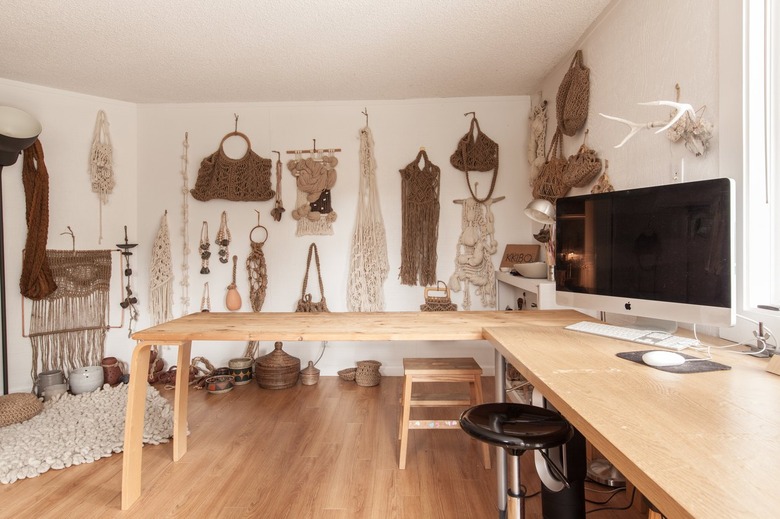How To Refinish Rubberwood
We may receive a commission on purchases made from links.
Rubberwood, also called parawood, comes from the rubber tree, Hevea brasiliensis, or the Pará tree. But it isn't any more spongy, flexible or malleable than any other type of wood. Parawood isn't the most attractive wood species, with its close, undramatic grain and relatively uniform blonde color. And it isn't the most durable wood, either. Its rating on the Janka hardness scale is 960, making it about as hard as cherry and about twice as hard as pine, but softer than oak or maple. Moreover, it lacks natural protection from rot and insects. However, it's readily available from rubber plantations, and the price is right, so furniture manufacturers use it liberally.
There's a good chance one of your favorite chairs or dressers is made from rubberwood, and if it has seen better days, you may be considering refinishing it. You can refinish rubberwood furniture just as you would if the piece was made from any other type of wood. Rubberwood is easy to sand, and it takes stain well. About the only precaution to remember is that the wood may appear blotchy unless you apply a conditioner before staining.
Stripping and Sanding Rubberwood
Stripping and Sanding Rubberwood
When you refinish furniture, that means it already has a finish – and that has to go. If the piece is finished with lacquer, as is common with furniture made from Hevea brasiliensis, you can often remove it just by sanding with 120- and 150-grit sandpaper, especially if it's old and worn. Some other finish materials, such as varnish and paint, are too robust to remove by sanding and require a stripper. Any commercial methylene chloride stripper will work, but go easy on yourself and use a soy- or citrus-based product instead. Both are less toxic than chemical strippers, and although they work more slowly, they have enough power to remove most finishes.
- Apply the stripper with a paintbrush and wait for the paint to bubble up.
- Remove the stripper and old finish with a paint scraper or wire brush. Be sure to wear gloves and goggles, and collect the old material in newspapers or a plastic bag for disposal.
- Wash down the wood with water to remove all residue and neutralize any stripper that remains.
- Let the wood dry completely. Water will raise the wood grain somewhat, but that's OK because you'll sand it right down again when the wood dries.
- Sand the wood with increasingly fine grits of sandpaper. Start with 120- or 150-grit. You can stop at 150-grit if you're painting the wood, but sand again with 220-grit to get a smoother finish for stained wood.
Bleaching Rubberwood
Bleaching Rubberwood
If you want to change the color from dark to light, you may have to bleach the wood after stripping. The best bleach for removing stain and dye coloration is chlorine bleach. Household bleach is too weak to do this, though, so use pool bleach instead. Mix a saturated solution in water and apply it immediately with a brush. Repeat once if necessary, as any more than that won't have any effect. Then, sand the wood when it dries.
Conditioning, Staining, and Finishing Rubberwood
Conditioning, Staining, and Finishing Rubberwood
After you've cleaned and sanded the wood with 150-grit paper to prepare it for finishing, you should apply a conditioner if you plan to stain. You'll find wood conditioner at any paint supply store because it's a common thing to use when you refinish furniture. Apply it with a paintbrush. A single coat does the job, and once it dries, you're ready to stain. Apply the stain with a brush or a rag, and use a separate rag to wipe off excess before it dries. Wait overnight before finishing.
A lacquer finish looks better than a varnish on rubberwood, and lacquer is easy to apply with aerosol spray cans:
- Spray on a full wet coat, being careful to avoid drips.
- Wait for about 20 minutes, then scuff with 220-grit sandpaper and apply another coat. You can repeat this procedure as often as you like to build up the finish, but two or three coats is usually enough.
- Let the final coat cure overnight before using the furniture.
